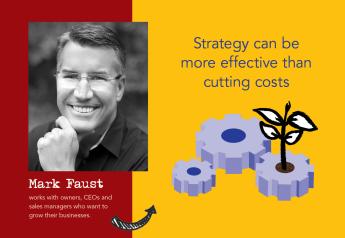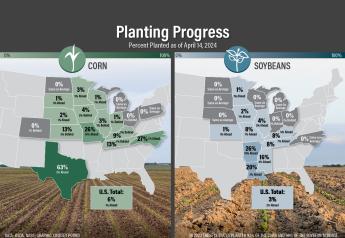Assessing and Managing Strategic Risk

There are numerous ways to classify risk. One useful taxonomy is to categorize risk as either operational risk or strategic risk. Operational risk is composed of business and financial risk. Business risk is defined as the inherent risk in the performance of a farm independent of the way it is financed. Common business risks include price, cost, and production variability. Financial risk is defined as the added variability of net returns that result from financial obligations associated with debt financing. Strategic risk, on the other hand, involves the sensitivity of the farm's strategic direction and ultimate vulnerability and sustainability of the farm to uncertainties in the business climate. Recognizing the increasing importance of strategic risk, this article discusses the assessment and management of strategic risk.
Competitive Positioning
Before trying to assess or manage strategic risk, it is imperative that an operation think about its strategic direction. Is the operation interested in a commodity based strategy or a differentiated product strategy? A commodity product strategy focuses primarily on cost control. In contrast, a differentiated product strategy focuses on value-added production or receiving an above average price for the farm's products.
When evaluating strategic direction, it is important to conduct an internal and external analysis of your farm business. An internal analysis identifies key resources, capabilities, and core competencies. One of the ways to assess resources, capabilities, and competencies is to ask yourself whether your operation has unique resources or core competencies that lead to a competitive advantage (see here). A farm needs to make sure that it is fully utilizing these unique resources and core competencies.
An internal analysis of a farm often involves evaluating the skill set of each key employee. In this case, we are focusing on the strategic positioning skills that are listed in table 1. As with other management areas such as production or financial management, it is often helpful to have someone take the lead with regard to strategic positioning.

It is also important to examine the external environment or scan the horizon (Dobbins et al., May 2004). What is the social environment and industry environment that the farm faces? How does the current environment and expected changes in the environment affect my strategic direction? Another way to grapple with the external environment is to think about the key drivers facing the markets for the products being produced by your farm.
Assessing Strategic Risk
Now let us return to our discussion of strategic risk. Uncertainties pertaining to strategic risk may be derived from the following sources: international, government policy, government regulation, macroeconomics, social, natural, industrialization, technological uncertainty, or competitive conditions. Rather than creating a laundry list of strategic risks for each of these sources, we will provide an example of each source. Political unrest in a key importing country would be an example of an international strategic risk. Government policy and regulation strategic risk may involve a reduction in crop insurance subsidies or limitations on fertilizer use on farm fields. A macroeconomic strategic risk may involve a change in the value of the dollar or an increase in interest rates. Social and natural strategic risks could involve a change in the public perception of the influence of production agriculture on water quality or reduction in the access to irrigation water. Industrialization and technological uncertainty may make a particular production process that is extensively used on the farm obsolete or limit access to current markets. Examples of technologies that are rapidly changing include sow gestation crates and layer cages. Changing competitive conditions could refer to international or local competitiveness.
Managing Strategic Risk
From the discussion of sources of strategic risk above, it is obviously going to be difficult to mitigate certain sources of strategic risk. The fact that it is difficult to manage or transfer risks through futures or insurance markets, or by controlling debt, does not make strategic risk less of a concern. Creative strategies are often needed to manage strategic risk exposure. These approaches may include flexibility, adaptability, and diversification. In essence, strategic risk requires the development of alternatives or contingency plans.
One of the ways to think about strategic risk is to use scenario analysis. Scenario analysis is used extensively in business planning. Scenarios can provide insight and an understanding of the forces and drivers that may shape the uncertain future. Scenarios help provide a framework about what may happen, and more importantly what a farm might do if one of the scenarios plays out. When evaluating scenarios it is important to try to gauge how each scenario will affect the farm's balance sheet and income statement. This can be done using pro forma statements or projections. It is prudent to use at least three scenarios: worst-case scenario, most likely scenario, and best-case scenario. In addition to examining the financial impacts of each scenario, it is also important to gauge how each scenario will affect managers' attention and oversight. As alluded to above in our discussion of strategic positioning skills, it is helpful if the farm has at least one person that focuses on strategic positioning.
Conclusions
Managing both operational risk and strategic risk is important in today's production agriculture environment. Traditionally, most farms have focused on operational risk, which may involve variability in prices, costs, and production. Strategic risk or focusing on the sensitivity of the farm's strategic direction to changes in the business climate is becoming increasingly important. This article briefly discussed competitive positioning, and the assessment and management of strategic risk. For additional information pertaining to operational and strategic risk, see Miller et al. (2004).







